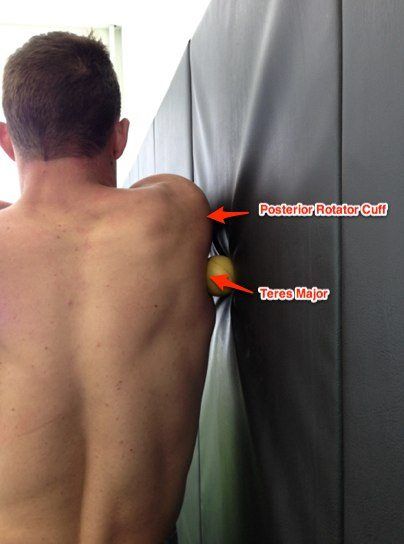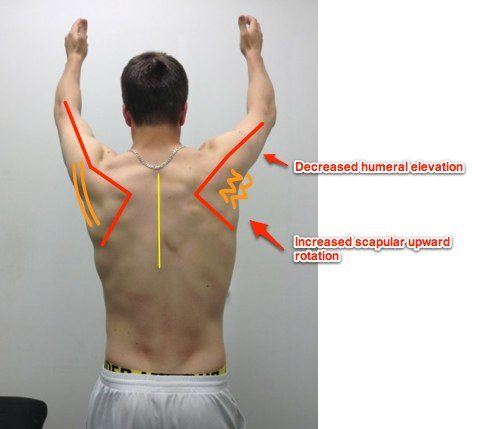There is no doubt that baseball pitchers and other overhead athletes get tight from throwing. We originally showed this in my study published in AJSM, pitchers had an immediate loss of shoulder internal rotation after 45 pitches on the mound.
I often say that this loss of motion can easily become cumulative if not addressed, and unfortunately, the majority of baseball pitchers I see tend to need work on their soft tissue mobility. I believe this is directly related to the cumulative trauma to the muscles that has been left unaddressed for some time.
I am a firm believer that regular soft tissue maintenance work is important for baseball pitchers, but I also understand that having access someone like me isn’t very realistic for many athletes.
We have come a long way with tools to work on your own soft tissue, like foam rolling, massage sticks, and trigger point balls. For throwers, we have been recommending the use of these tools for some time and you often see people focused on a few key areas like the posterior rotator cuff, lats, and pecs. This is for good reason!
But there is another spot that I bet you are missing that I think is pretty important and will help you feel better quickly.
Teres Major
The teres major just doesn’t get enough respect. It’s not lucky enough to be included as one of the “rotator cuff” muscles. It’s not a big guy that you can read how to strengthen in Men’s Health, like the pecs or lats. Sometimes I think it is forgotten!
The teres major is a pretty important muscle to focus on.
The teres major acts as an internal rotator and adductor of the arm. Guess what the arm does as you accelerate through your mechanics to generate velocity on the ball? That is right, you internally rotate and adduct the arm!
But unlike the pec and the lat, who also contribute to the same motion, the teres major has a more intimate relationship with the scapula and humerus. When you look at baseball pitchers, you tend to see a large, overdeveloped, hypertrophied teres major. This again tells me it is an important muscle for throwing. (photo from wikipedia)
As the teres major gets tight and shortened from overuse and throwing. you can start to see changes in scapulohumeral motion. When assessing someone, you may see that the scapula looks like it wants to upwardly rotate more on the throwing side, which I often attribute to the teres major shortening not allowing proper separation of scapula and humeral arm movement. Essentially the tight teres major drags the scapula up with the arm because the two can’t separate
It looks like the person is achieving good arm elevation but realistically they are just compensating with more scapular upward rotation. If you look closely, you’ll even notice that they are elevating the arm less and upwardly rotating their scapula more. This is probably going to cause some impingement and irritation to the shoulder. Here is a great example:
Self-Myofascial Release and Soft Tissue Work for the Teres Major
So as much as I want to help you and work with you, I also want you to be able to manage this yourself a little bit. Remember, we said earlier that you will lose motion after throwing, it’s all about managing this as best as you can.
A simple way to work on the teres major is to perform self-myofascial release to the muscle with a trigger point or lacrosse ball. We often recommend you roll the back of the shoulder or posterior rotator cuff, but in my experience, we do not emphasize the teres major enough. To do this you simply need to understand the anatomy of the muscle and adjust the placement of the ball.
I should note that I do not think foam rolling your lats will get your teres major very well. The muscle is too short and situated up towards your armpit that it just doesn’t work well. You need to get in there more focal with a smaller trigger point ball.
You can also read my article and video demonstration on self myofascial release for the teres major.
What Trigger Point Ball to Buy?
I typically use a couple of different trigger point balls, depending on how firm I want the ball to be. I would recommend the softer balls for beginners and firmer for advanced users. Here is what I recommend:
- For Beginners: Trigger Point Therapy Massage Ball. These are a little more expensive than lacrosse balls at about $15, but they are softer and have a little nub than you can wedge into different areas, which I like. This is a good starting point, but the newer Trigger Point Therapy X-Factor Ball is a little larger and more firm. I use these a lot.
- For Advanced Users: SKLZ Reaction Ball. You know those little yellow reaction balls that you drop and bounce all over the place? A friend just recently turned me on to these as trigger point tools! They work great! They are firm and have great little nubs to really get in to the tissue. Plus you can usually find them for under $10.
- You can always just go with a simple lacrosse ball as well. I think lacrosse balls are great, but they are pretty firm and don’t have a small nub to use, making them less than ideal for some areas. That being said they are under $2!
Try working on the teres major or recommending this to your athletes, I bet you see improvement pretty quickly. Working on the teres major soft tissue with some self-myofascial release techniques is an important, yet often overlooked, area to emphasize in baseball pitchers and other overhead athletes.
[hr]







